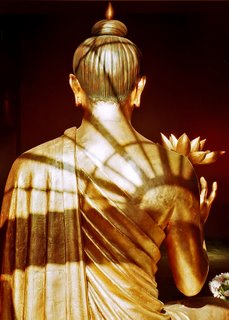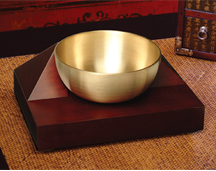
Awareness
As a sustainable communities professor at Dominican University of California, I love to give my students strange assignments and then watch them grow. In turn, they’ve taught me much about coming into the right relationship with life.
Modern living involves high levels of sensory input—much of it meaningless or even nasty. So we shut down. Our magnificent equipment—which allowed our ancestors to feel a shift in the breeze, smell ripening fruit, hear every footfall and see subtle color changes—goes into standby mode. But we need our senses to tell us what we crave (birdsong, sunshine, a gurgling stream, ripe fruit) and what we reject (leaf blowers, smog, clutter). Our senses bring us to life.
So at the beginning of class, I ask students to pause. “Close your eyes, take a deep breath and relax. What do you smell? What do you hear—near, far, steady, intermittent? How does the air feel on your skin—dry, moist, moving, still, cold, warm? Now slowly open your eyes, and notice shapes, colors, light, dark, near, far. What appeals to your senses, and what is a turnoff? What are you aware of now that you weren’t before?”
Suddenly, the students are aware of both the unpleasant and the delicious. They dislike the sounds of traffic, ticking clocks, and mechanical heating and cooling systems. And if there is even one green growing thing, one ray of sunshine or one bird singing, they fall in love with it. In fact, if the weather is decent, they ask, “Can we have class outside?”
Where are you?
At the end of class, I send students home with an expanded assignment: At least once a day, stop and notice how the air feels, where the sun is, the wind’s direction, the terrain, vegetation, critters; then write it all down. This exercise has changed a few lives.
Matt, an urban apartment dweller, realized that he’d been tolerating noise levels that caused tension by day and insomnia by night; he moved, and now he feels like a different person.
Cheryl lives in a suburb and takes the bus to work. She recently began walking to a neighborhood bus stop rather than driving to a central stop, partly so she could spend more time outdoors. She became more aware of trees, birds and weather conditions and more familiar with her neighbors. She noticed that birds were more active and vocal when the sky was clear; she noticed when the geese started flying south and missed them when they were gone. Observing the trees, she noticed the wind’s direction. “The peaceful window of time to myself first thing in the morning helps me start my day with more clarity and calmness,” she says. “And walking home at night, I enjoy gazing at the beautiful night sky and the changing moon.”
Josh lives near the ocean. Sensory tune-ins made him more aware of the breeze, and he wanted to play with it. He put up a wind sock and soon noticed that the wind usually came from the northwest. But why? He explored regional wind patterns, and I encouraged him to study storm fronts and cyclonic wind patterns. Then he bought a little weather station to keep track of wind, air temperature and barometric pressure. After I suggested that he also note his physical and emotional feelings, he had an epiphany: His moods were often directly related to weather conditions.
Cheryl and Josh are beginning to grasp that nature is everywhere and that everything affects everything else. This also has a practical application: They are gaining observation skills that will make them good ecological designers, able to create habitations that are powered by natural elements and friendly to the biosphere.

balancing rocks
In a culture that treats our bodies as isolated machines, it’s world-changing to notice our craving for harmony with other natural phenomena—and starting to learn how to satisfy it. Getting outdoors, listening to our bodies, watching birds, tracking breezes and cycling with the sun are enjoyable in themselves, but they lead us to something much larger: an understanding of how the world works. And once we get it, there’s no going back. The insights keep multiplying, and we’re motivated to greater and deeper actions by feeling truly, deeply alive.
As my student Brian says, “When I stop everything and sit as part of it all, I feel the connection rather than intellectualizing interconnectedness.” Because everything is interconnected, we can start our journey anywhere, with deceptively simple steps: stop, look, listen, feel.

Singing Bowl Meditation Timer from Now & Zen, Inc. - Boulder, CO
The Zen Timepiece (with Tibetan- Singing Bowl) serves as a countdown and interval timer for yoga, meditation, bodywork, etc.; and it can also be set to chime on the hour as a tool for “mindfulness.”
adapted from Natural Home Magazine, September/November 2009 by CarolVenolia
Carol Venolia is an eco-architect and co-author of Natural Remodeling for the Not-So-Green House (Lark Books, 2006). She teaches in the Sustainable Communities program at Dominican University of California.

Chime Meditation Timers and Clocks with Chime in Bamboo, Walnut, Maple, and Black Lacquer
Now & Zen’s Meditation Timer & Alarm Clock Shop
1638 Pearl Street
Boulder, CO 80302
(800) 779-6383
Posted in Insomnia, mindfulness practice, Natural Awakening, nature, Well-being